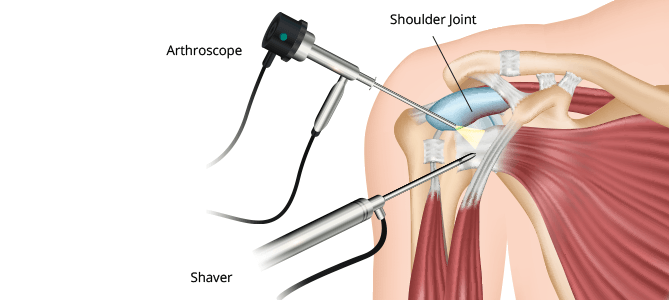Arthroscopy of knee and Shoulder
13:5-13:22">Cartilage damage
Ligament injuries
Loose bodies within the joint
Shoulder Arthroscopy:
- Rotator cuff tears
- Labral tears
- Impingement syndrome
- Frozen shoulder
Benefits of Arthroscopy
- Minimally Invasive: Smaller incisions result in less pain, scarring, and a quicker recovery time.
- Reduced Hospital Stay: Most arthroscopic procedures are outpatient, meaning you can go home the same day.
- Faster Recovery: The minimally invasive nature of arthroscopy allows for a faster return to normal activities.
- Precise Diagnosis: The arthroscope provides a clear view of the joint, enabling accurate diagnosis.
- Effective Treatment: Many joint conditions can be treated effectively with arthroscopic surgery.
The Arthroscopy Procedure
- Anesthesia: You will be administered anesthesia, either general or regional, to ensure comfort during the procedure.
- Incisions: Small incisions are made around the joint.
- Arthroscope Insertion: The arthroscope is inserted through one of the incisions.
- Diagnostic Examination: The surgeon examines the joint for any abnormalities.
- Surgical Repair: If necessary, the surgeon will use specialized instruments to repair damaged tissues.
- Closure: The incisions are closed with stitches or surgical tape.
Recovery and Rehabilitation
After surgery, you will need to follow a rehabilitation program to regain strength, flexibility, and range of motion. Physical therapy can help you recover quickly and return to your normal activities.
If you're experiencing knee or shoulder pain, consider consulting with an orthopedic surgeon to discuss whether arthroscopy is the right treatment option for you.

